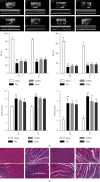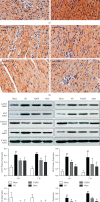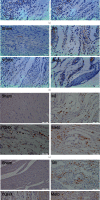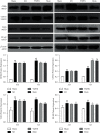Impact of Yiqi Huoxue Decoction on the Relationship between Remodeling of Cardiac Nerves and Macrophages after Myocardial Infarction in Rats
- PMID: 35432831
- PMCID: PMC9010163
- DOI: 10.1155/2022/4441603
Impact of Yiqi Huoxue Decoction on the Relationship between Remodeling of Cardiac Nerves and Macrophages after Myocardial Infarction in Rats
Retraction in
-
Retracted: Impact of Yiqi Huoxue Decoction on the Relationship between Remodeling of Cardiac Nerves and Macrophages after Myocardial Infarction in Rats.J Healthc Eng. 2023 May 24;2023:9789870. doi: 10.1155/2023/9789870. eCollection 2023. J Healthc Eng. 2023. PMID: 37266214 Free PMC article.
Abstract
Sympathetic nerve remodeling after myocardial infarction (MI) has an indispensable role in cardiac remodeling. Numerous works have shown that sympathetic nerve remodeling can be delayed by inhibition of inflammatory response. Earlier studies have shown improvement in ventricular remodeling and inhibited chronic stage neural remodeling by Yiqi Huoxue decoction (YQHX). Therefore, the current study looked at the inhibitory effect of YQHX prescription on proinflammatory mediators and macrophages and the effect on neural remodeling at 3 and 7 days after MI. YQHX inhibited the expression of Toll-like receptor 4 (TLR4) and nuclear factor kappa B (NF-κB) proteins and macrophage infiltration within 7 days after myocardial infarction. YQHX could decrease Th-positive nerve fiber density in the area around infarction and reduce the expression of growth-associated protein 43 (GAP43), nerve growth factor (NGF), and tyrosine hydroxylase (TH) proteins, which was associated with the remodeling of sympathetic nerves. Thus, the nerve remodeling inhibition after MI due to YQHX may be through its anti-inflammatory action. These data provide direct evidence for the potential application of traditional Chinese medicine (TCM) in the remodeling of sympathetic nerves after MI.
Copyright © 2022 Yunke Liu et al.
Conflict of interest statement
The authors declare that they have no conflicts of interest.
Figures




References
Publication types
MeSH terms
LinkOut - more resources
Full Text Sources
Medical

